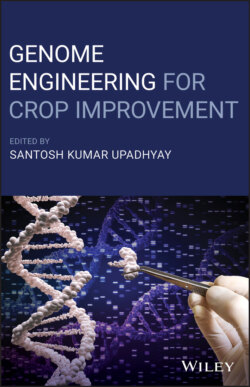Читать книгу Genome Engineering for Crop Improvement - Группа авторов - Страница 35
2.3.3 Laser Ablation‐Inductively Coupled Plasma Mass Spectrometry
ОглавлениеLA‐ICPMS is characterized by its superior chemical sensitivity down to the μg kg−1 level, and is, therefore, suitable for imaging trace element distributions. Further, it is a benchtop laboratory technique with significantly lower operating costs than accelerator‐ or synchrotron‐based techniques. The lateral resolution reaches down to 1 μm thanks to laser ablation cells with a fast washout and sensitive ICPMS detectors (Gundlach‐Graham and Günther 2016; Van Elteren et al. 2016; Van Malderen et al. 2016). In contrast to micro‐PIXE and micro‐XRF techniques, LA‐ICPMS belongs to the destructive methods, because biological samples are usually completely ablated during the measurement (Wu and Becker 2012) and after LA‐ICPMS no other analytical technique can be applied.
Figure 2.6 Element (K, Ca, Fe, Mn, and Zn) localization in Khorasan wheat (Triticum turgidum ssp. turanicum) by micro‐XRF, Synchrotron Light Research Institute, Thailand, lateral resolution 50 μm, step size 50 μm, polychromatic excitation, data fitted by PyMCA (Solé et al. 2007). Cps, counts per second.
LA‐ICPMS was used to map the Zn localization in durum wheat at different nitrogen supply (Persson et al. 2016). Elemental distribution imaging was combined with the analysis of Zn‐binding proteins by liquid chromatography ICPMS and orbitrap MS. The increase in Zn and N supply had a major impact on the Zn concentration in the endosperm and reached concentrations higher than current breeding targets. The sulfur concentration also increased, but S was only partially co‐localized with Zn. The mutual accumulation of Zn and S was reflected in much more Zn bound to small cysteine‐rich proteins (apparent size, 10–30 kDa), while the response of larger proteins (apparent size, 50 kDa) was only moderate. Most Zn‐reactive proteins were associated with redox and stress processes.
In assessing quality parameters in grain, it is also important to track potentially hazardous metals like Cd. Cd is one of the most mobile hazardous elements in plants, therefore, it readily accumulates in grains of rice, wheat and other cereals, posing threats to consumers. Besides essential macro in micronutrients, LA‐ICPMS was used to image the distribution of hazardous Cd in durum wheat (Yan et al. 2020). Wheat grains accumulate extremely low concentrations of Cd (<1 μg g−1), so it is impossible to probe the distribution using X‐ray based techniques. Cd is a high energy element with a Cd─K line of 23.17 keV and a Cd‐L3 line of 3.13 keV. The K line is hard to excite and the L3 line is hidden in the tail of the macronutrient potassium K‐line, raising the limit of detection to tens of μg g−1 (Vogel‐Mikus et al. 2008). In durum wheat, Cd accumulated mostly in the crease region, and inside the crease, in the pigment strand. In the vascular bundle, Cd was mainly associated to Sulfur ligands, and a relatively high concentration was therefore found in endosperm, the Sulfur‐containing protein (gluten) fraction.
Figure 2.7 LA‐ICPMS images of the Ca and K distribution in the maize (Zea mays L.) kernel. The lateral resolution is 50 μm.
Localization of the major elements Ca and K in maize (Zea mays) (Figure 2.7) shows similar patterns as in other monocotyledonous species. Ca is mainly localized in the seed coat, while K is found in high concentrations in embryonic tissues.
